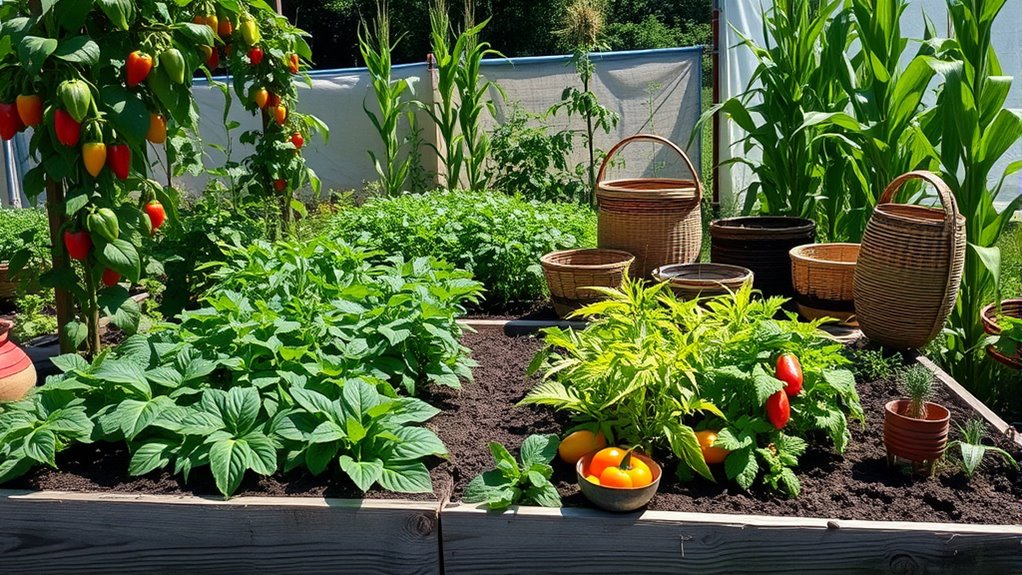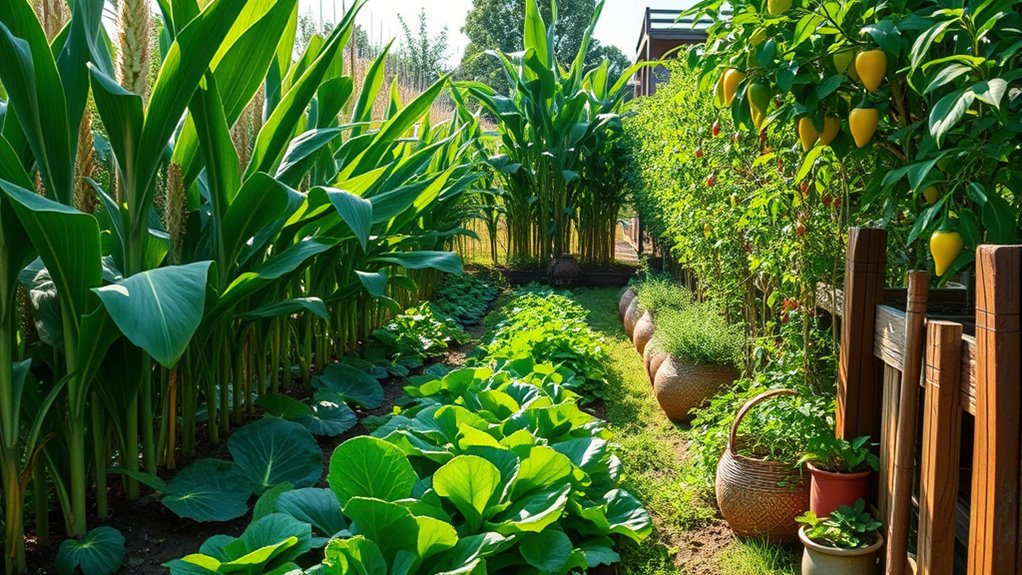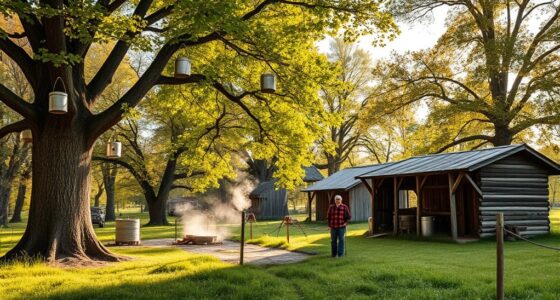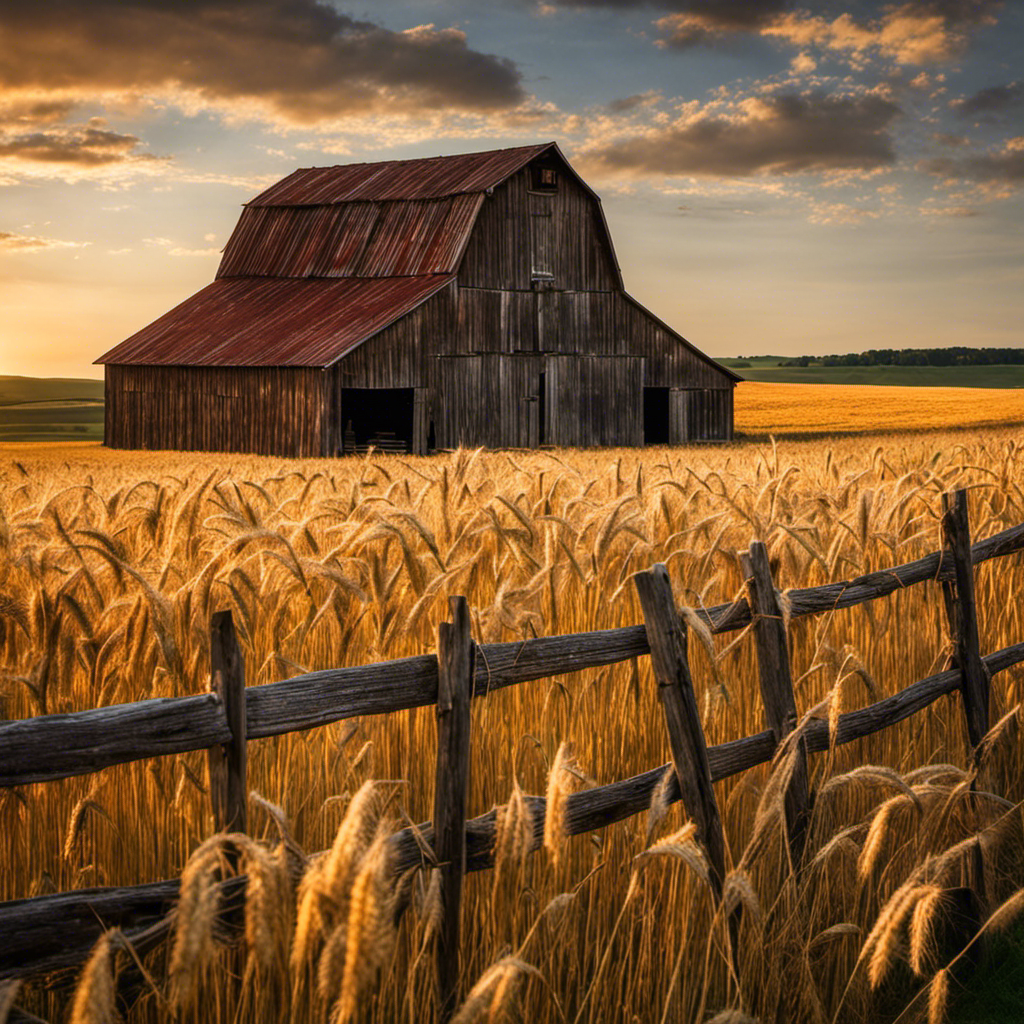Hmong kitchen gardens in rural Minnesota blend traditional plant choices with adapted techniques to thrive in the short growing season. You’ll find vegetables like bok choy, bitter melon, and herbs such as Thai basil that reflect Hmong roots. Gardeners use methods like raised beds, composting, and lunar planting calendars to improve yields and weather resilience. These gardens foster community bonds and cultural continuity—exploring further reveals how resilience and tradition shape Hmong gardening practices in Minnesota.
Key Takeaways
- Hmong kitchen gardens in rural Minnesota reflect cultural traditions through specific plant choices and planting arrangements.
- They combine traditional techniques with Minnesota adaptations, like raised beds and composting, for resilient food production.
- Gardens include culturally significant vegetables such as bitter melon, bok choy, and Thai basil suited to local growing conditions.
- Planting follows lunar calendars and traditional methods to align with cultural beliefs and optimize harvests.
- Community sharing and sustainable practices strengthen cultural bonds and resilience among Hmong farmers in rural areas.

In rural Minnesota, many Hmong families have transformed small plots of land into vibrant kitchen gardens that serve both as sources of food and cultural expression. These gardens are more than just places to grow vegetables; they are living reflections of Hmong cultural traditions, where every plant and planting method tells a story. As you tend to these gardens, you’ll notice that each family’s approach is deeply rooted in generations of knowledge, passed down through oral traditions and hands-on experience. The gardening techniques employed are practical yet intricate, combining traditional methods with adaptations suited to Minnesota’s climate. This blend of old and new allows Hmong gardeners to optimize their limited space and maximize harvests, ensuring their cultural dishes can be prepared with fresh, homegrown ingredients. Additionally, understanding cultural practices helps explain the significance behind specific planting choices and garden arrangements. You’ll see that Hmong gardening techniques emphasize the importance of soil preparation, crop rotation, and companion planting. Many families start by enriching their soil with compost, often made from kitchen scraps and organic waste, which is a nod to sustainable practices rooted in tradition. They carefully select plants that thrive in Minnesota’s short growing season, such as leafy greens, herbs, and root vegetables, while also planting varieties like bitter melon, bok choy, and Thai basil—flavors that carry cultural significance. These choices are deliberate, reflecting a deep understanding of what grows well locally and what connects them to their heritage. Cultural traditions shape every aspect of gardening, from the timing of planting to the arrangement of plants in the garden beds. For example, some families follow lunar planting calendars to align their garden work with traditional beliefs about auspicious days. Others incorporate specific planting techniques, such as using raised beds to improve drainage and protect crops from Minnesota’s unpredictable weather. These methods demonstrate resilience and ingenuity, allowing families to adapt their ancestral practices to new environments. They also foster a sense of community, as neighbors share seeds, advice, and labor, further reinforcing their cultural bonds.
Frequently Asked Questions
How Do Hmong Gardeners Choose Their Plant Varieties?
You choose your plant varieties by considering native plant selection, which helps guarantee they thrive in your environment. You also think about pest management strategies, selecting plants resistant to pests or using natural deterrents. By combining knowledge of local plants and pest control, you create a diverse garden that’s sustainable and productive. This approach allows you to enjoy a vibrant, healthy garden while minimizing the need for chemical interventions.
What Traditional Techniques Are Used in Hmong Gardening?
You use traditional methods like hand tilling, composting, and companion planting, which hold deep cultural significance. These techniques are passed down through generations, emphasizing harmony with nature and sustainable practices. You carefully select seed varieties based on their cultural importance and adaptability, ensuring a thriving garden that respects your heritage. By relying on these traditional techniques, you honor your ancestors and maintain a strong connection to your cultural roots.
How Do Hmong Gardens Adapt to Minnesota’s Climate?
Your gardens act like resilient warriors, adapting to Minnesota’s harsh climate. You use innovative soil management techniques to enrich the earth, ensuring healthy crops despite cold snaps and short growing seasons. By incorporating season extension methods and selecting hardy plants, you enhance climate resilience. These strategies help your garden thrive, turning challenges into opportunities, and demonstrate a deep understanding of the land’s needs, making your garden a testament to perseverance.
What Role Do Kitchen Gardens Play in Hmong Cultural Practices?
You see, kitchen gardens hold deep cultural significance for the Hmong community, serving as a essential link to traditions and identity. They play a central role in ritual practices, such as offering fresh herbs during ceremonies and celebrating seasonal festivals. By tending these gardens, you preserve cultural heritage, pass down traditional knowledge, and strengthen community bonds, making them more than just food sources—they’re living symbols of Hmong history and spirituality.
How Do Hmong Communities Share Gardening Knowledge?
You share gardening knowledge through community seed sharing and local workshops. In Hmong communities, people often exchange seeds to guarantee diverse crops and preserve traditions. Gardening workshops allow you to learn techniques, improve skills, and connect with others. This collaborative approach keeps cultural practices alive, promotes sustainability, and strengthens community bonds. By actively participating, you help maintain the rich heritage of Hmong gardening traditions for future generations.
Conclusion
Your journey through Hmong kitchen gardens in rural Minnesota reveals a world where tiny plots produce enough to feed entire communities and grow plants that seem to defy nature itself. These gardens aren’t just patches of land; they’re magical havens overflowing with life, tradition, and resilience. By witnessing this, you realize these gardens have the power to transform not only food but the very soul of a community—truly, they’re nature’s most astonishing marvels.










